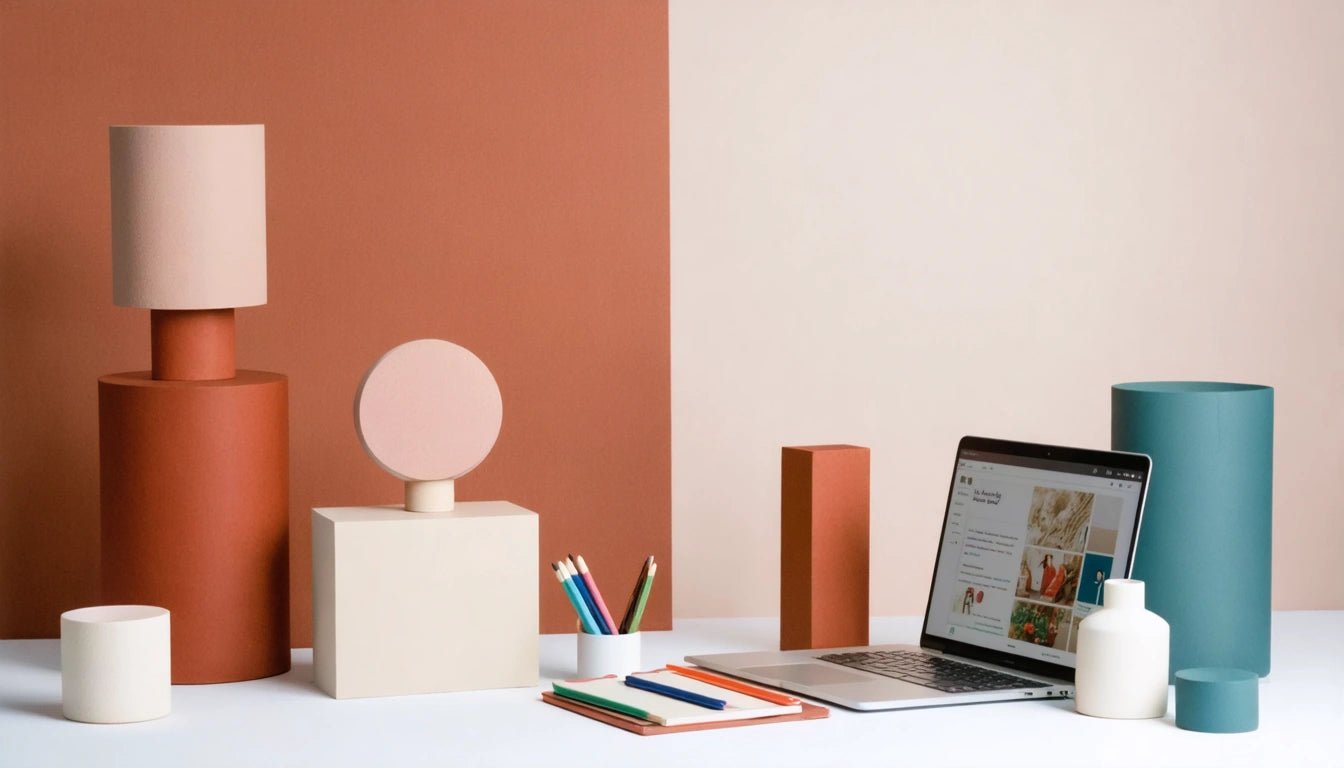Table of Contents
Finding the Perfect Color Combinations: A Guide to Matching Colors
Color combinations can make or break your design project, whether it's interior decorating, graphic design, or product packaging. Understanding what color goes with what color is both an art and a science, rooted in color theory but refined through creative application. This comprehensive guide will help you discover harmonious color pairings and create visually appealing combinations that communicate your intended message effectively.
Color Theory Basics: Understanding What Colors Go With What
At the foundation of all successful color combinations is a solid understanding of color theory. The color wheel serves as a visual representation of how colors relate to each other and provides a framework for creating harmonious pairings.
Colors are typically categorized into three main groups:
- Primary colors: Red, blue, and yellow
- Secondary colors: Green, orange, and purple (created by mixing primary colors)
- Tertiary colors: Colors created by mixing primary and secondary colors
When determining what colours go with what, consider the following color relationships:
Monochromatic
Using different shades, tints, and tones of a single color creates a sophisticated, cohesive look. For example, light blue, sky blue, and navy create a monochromatic palette.
Analogous
Colors that sit next to each other on the color wheel, such as blue, blue-green, and green, create harmonious combinations that are pleasing to the eye.
Complementary
Colors positioned opposite each other on the color wheel (like red and green) create high-contrast, vibrant combinations that command attention. Finding colors that complement each other is essential for creating dynamic visual interest.
Complementary Colors: Finding Perfect Pairs
Complementary color pairs create strong visual contrast and can energize a design. These opposing colors make each other appear more vibrant when placed side by side. Classic complementary pairs include:
- Red and green
- Blue and orange
- Yellow and purple
When working with complementary colors, consider using one as the dominant color and the other as an accent to avoid overwhelming the viewer. As explored in this guide to color combinations and palettes, balancing complementary colors effectively creates visually striking designs.
Highlight: The 60-30-10 rule is a designer's secret for balanced color application. Use your dominant color for 60% of the space, a secondary color for 30%, and an accent color for the remaining 10%.
What Color Goes With Red: Creating Powerful Combinations
Red is a bold, attention-grabbing color that evokes strong emotions ranging from passion and love to danger and excitement. When considering what color goes with red, several options create harmonious and effective combinations:
White and Red
This classic pairing creates a clean, crisp look with maximum contrast. White allows red to stand out while providing visual breathing room.
Black and Red
For a dramatic, sophisticated look, black and red create a powerful combination that's both elegant and bold.
Gold/Yellow and Red
This regal combination evokes luxury and celebration. It's particularly effective for special occasions and premium branding.
Navy Blue and Red
For a more subdued yet classic pairing, navy blue complements red beautifully while toning down its intensity.
Red is particularly effective in packaging design, as seen in premium party-sized pre-rolled cones that use red accents to create a festive, eye-catching appearance that stands out on shelves.
What Colors Go With Beige: Versatile Neutral Pairings
Beige is a versatile neutral that serves as an excellent foundation for countless color combinations. When wondering what color looks good with beige, consider these elegant pairings:
Navy Blue and Beige
This classic combination offers a sophisticated, timeless appeal that works well in both fashion and interior design.
Emerald Green and Beige
For a natural, organic feel, emerald green adds richness and depth to beige backgrounds.
Burgundy and Beige
This warm, inviting combination creates an atmosphere of elegance and comfort.
Soft Pink and Beige
For a gentle, romantic aesthetic, soft pink adds warmth and femininity to beige foundations.
What colors go with beige depends partly on the undertone of your specific beige shade. Warmer beiges (with yellow or orange undertones) pair well with terracotta, olive green, and warm blues, while cooler beiges (with gray undertones) complement slate blue, lavender, and sage green.
Creating Balanced Color Palettes for Any Project
Moving beyond simple color pairs, creating comprehensive color palettes involves thoughtful consideration of how multiple colors interact. Selecting three complementary colors is often a perfect starting point for balanced design.
When developing a color palette, consider:
- Purpose and emotion: Different colors evoke different feelings. Blues convey trust and calm, while yellows suggest optimism and energy.
- Context and industry: Color preferences and associations vary across industries and cultures.
- Balance: Include a mix of bold and subtle colors for visual hierarchy.
- Accessibility: Ensure sufficient contrast for readability and accessibility.
For comprehensive guidance on selecting and combining colors for maximum impact, this ultimate guide to color combinations offers valuable insights for designers at all levels.
Remember that while color theory provides guidelines, personal preference and brand identity also play crucial roles in determining what color goes with what color in your specific project. The most successful color combinations balance theoretical principles with creative intuition and strategic intent.



















